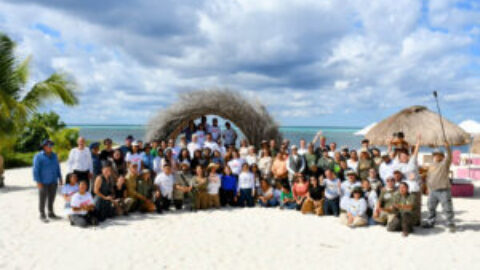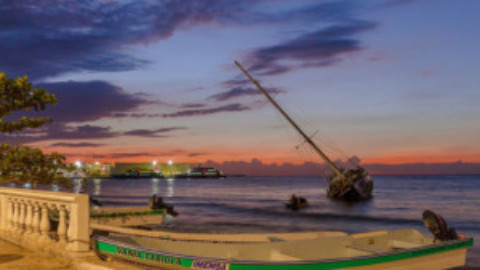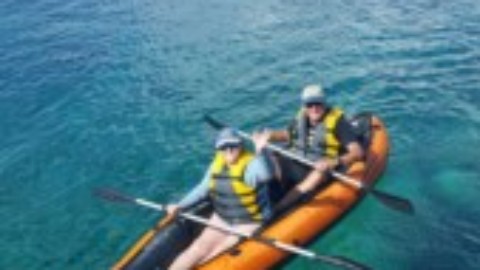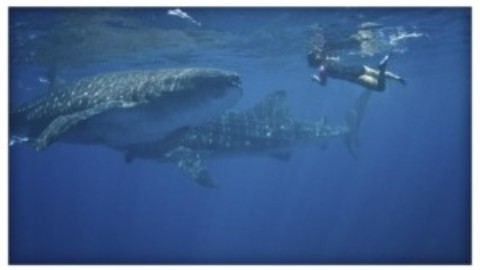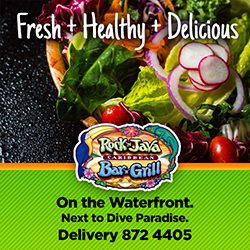Cozumel Cenotes Water Moises JH Tono Lopez
Presentation of results & situation of Urban Cenotes in Cozumel
Text & Translation By Moises Jimenez & Antonio Lopez
On Wednesday, May 23, 2023, government authorities of the island, as well as members of the Water Sciences Unit of the Yucatan Scientific Research Center (CICY) presented a report on the results of the current situation of the Urban Cenotes on the Island of Cozumel and the water resource.
These data are the result of a project to analyze the water from the cenotes located within the urban area of Cozumel, with the aim of knowing its quality and the factors that risk the sustainability of the water resource on the largest island of Quintana Roo. Sampling began at the end of September 2022.
Dr. Antonio Almazán Becerril, Director of the CICY’s Water Sciences Unit, was in charge of presenting said report.
Through the study of 10 cenotes, the elaboration of a report card on the state of integral condition of said bodies of water was achieved. It is important to mention that water is considered as a resource and as an ecosystem.
The indicators that were included were:
- Metals in sediment
- Trophic state
- Bacteriological fecal indicators
- Viral fecal indicators
- Microplastics
- Zooplankton biodiversity
- Fish biodiversity
The condition status card shows the results for each of the cenotes and what each of the indicators represents. It also includes the actions that the Cozumel City Council is carrying out to mitigate or reverse unfavorable cases.
The work consisted of first evaluating and categorizing the status of each of the indicators and then doing an integrating job to obtain a general index. For the indicator of fecal coliforms, it was observed that in the 10 sites there is a very poor general condition. In the indicator of abundance of micro plastics, more varied results are observed. Micro plastics currently represent an emerging contamination that is increasingly present in studies of bodies of water.
Once all the indicators have been evaluated, a general indicator is obtained where it can be seen that we do not have Cenotes in very good condition, but we do not have Cenotes in very poor condition either. The average reading is between fair and good. This represents a great possibility and opportunity to reverse the unfavorable conditions of these bodies of water.
Regarding the ecosystem state, it was possible to see that there are healthy fish populations. In some cases, invasive species were even detected, such as the Nile tilapia, which competes with local species for food, which can cause a displacement of the original species in these ecosystems.
The intention of the project is to generate a water quality monitoring program for the hydrological management of the island of Cozumel, through a work agenda for at least the next three years.
The recommendation to the Cozumel4you community is to always be prudent with the use that is given to the water coming from the public service or from wells within the properties. And definitely remember that tap water should never be used for human consumption.
Presentación de resultados y situación de Cenotes Urbanos en Cozumel
Text0 & Traducción Por Moises Jimenez & Antonio Lopez
El miércoles 23 de mayo de 2023 autoridades gubernamentales de la isla, así como Integrantes de la Unidad de Ciencias del Agua del Centro de Investigación Científica de Yucatán (CICY) presentaron un informe de resultados sobre la situación actual de los Cenotes Urbanos de la Isla de Cozumel y del recurso hídrico.
Dichos datos son el resultado de un proyecto para analizar el agua de los cenotes ubicados dentro de la mancha urbana de Cozumel, con el objetivo de conocer su calidad y los factores que arriesgan la sostenibilidad del recurso hídrico en la isla más grande de Quintana Roo. Los muestreos iniciaron a finales de septiembre de 2022.
El Dr. Antonio Almazán Becerril, Director de la Unidad de Ciencias del Agua del CICY, fue el encargado de presentar dicho informe.
Mediante el estudio de 10 cenotes se logró la elaboración de una tarjeta de reporte sobre el estado de condición integral de dichos cuerpos de agua. Es importante mencionar que el agua es contemplada como recurso y como ecosistema.
Los Indicadores que se incluyeron fueron:
- Metales en sedimento
- Estado trófico
- Indicadores fecales bacteriológicos
- Indicadores fecales virales
- Micro plásticos
- Biodiversidad de zooplancton
- Biodiversidad de peces
La tarjeta del estado de condición muestra los resultados para cada uno de los cenotes y lo que representa cada uno de los indicadores. También incluye las acciones que el ayuntamiento de Cozumel está llevando a cabo para mitigar o revertir los casos desfavorables.
El trabajo consistió en evaluar primero, y categorizar el estado de cada uno de los indicadores y después hacer un trabajo integrador para obtener un índice general. Para el indicador de coliformes fecales se observó que en los 10 sitios existe una muy mala condición general. En el indicador de abundancia de micro plásticos se observan resultados más variados. Actualmente los micro plásticos representan una contaminación emergente que cada tiene más presencia en los estudios de los cuerpos de agua.
Una vez evaluados todos los indicadores se obtiene un indicador general donde se puede observar que no tenemos Cenotes en muy buenas condiciones, pero tampoco tenemos Cenotes en muy malas condiciones. La lectura media se sitúa entre regular y buena. Lo cual representa una gran posibilidad y oportunidad para revertir las condiciones desfavorables de estos cuerpos de agua.
Respecto al estado ecosistémico se pudo ver que existen poblaciones de peces sanas. E incluso algunos casos se detectaron especies invasoras, como la tilapia del Nilo, la cual compite con especies locales por alimento, lo cual puede producir un desplazamiento de las especies originarias en estos ecosistemas.
La intención del proyecto es generar un programa de monitoreo de calidad del agua para la gestión hidrológica de la isla de Cozumel, a través de una agenda de trabajo al menos para los próximos tres años.
La recomendación a la comunidad de Cozumel4you es siempre ser prudentes con el uso que se le da al agua proveniente del servicio público o de pozos dentro de las propiedades. Y definitivamente recordar que nunca se debe utilizar agua del grifo para consumo humano.
- Cozumel GFNY Race Schedule 2024 - November 8, 2024
- Coral Reef Symposium - November 1, 2024
- Hanal Pixan Cozumel Day of the Dead - October 25, 2024



